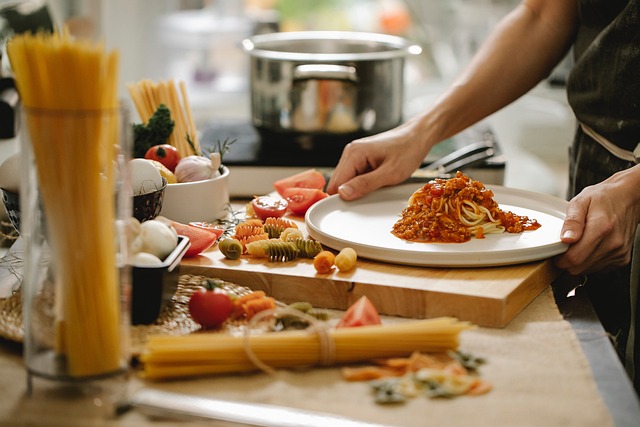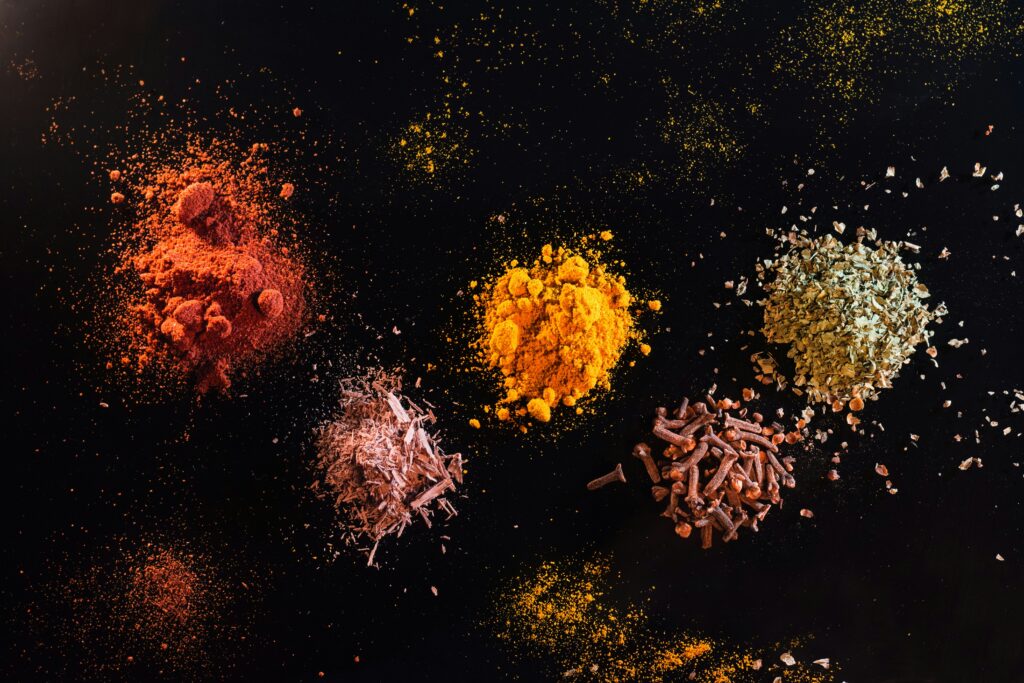The Foundation: Why Technique Matters
Good pastries are tasty. Great pastries stop you mid-bite. The margin between the two is razor-thin and comes down to doing the basics—perfectly. Technique turns flour, butter, and eggs into layers of crisp, flaky structure. Get it wrong and you still end up with something edible, just not memorable.
Baking isn’t like throwing together a stir-fry where you can tweak as you go. It’s a science—ratios, timing, and temperatures all matter. You don’t get second chances once the dough hits the oven. That’s why precision rules here. A few grams off, or the wrong butter temperature, and it all goes sideways.
So before you even preheat your oven, get everything in order. Measure out your ingredients. Understand your dough. Know how your oven behaves. Rushing through the setup guarantees mediocrity. But taking 10 extra minutes to prepare? That gets you one step closer to flaky, golden perfection.
Know Your Ingredients
Great pastries start with great inputs. You can follow every technique book to the letter, but if you’re using bargain-bin butter and bleached flour, the results will fall short. Quality flour gives structure and flavor—organic or stone-milled options often have better texture and more nuanced taste. Real butter, high-fat and unsalted, delivers richness and those distinct flaky layers you just can’t fake. Farm-fresh eggs? They add body and color, especially in custards or brioche. It’s not just about being fancy—it’s chemistry.
That said, not every ingredient demands gold-standard sourcing. You can swap cane sugar for coconut sugar without breaking the recipe. And in some doughs, a solid margarine can work if butter’s not an option—just don’t expect the same rise or flavor depth. Know where quality counts (fat, protein, and starches) and where you’ve got wiggle room (sweeteners or minor add-ins).
Storage is the sleeper factor in ingredient performance. Butter should be sealed and kept cold to prevent off-flavors. Flour stays fresher in airtight containers, away from heat and light. Eggs? Keep them consistent—ideally from a trusted source, always refrigerated. Proper care keeps ingredients predictable, which keeps your baking outcomes reliable. That’s half the battle.
Temperature Control is Everything
Temperature isn’t just a detail in pastry—it’s the backbone. Let’s start with chilled dough. Cold dough slows gluten development and keeps butter from melting too early. That means flakier layers and crispier edges. If your pie crusts are sagging or your croissants feel flat, odds are your dough got too warm. Cold dough handles better, bakes cleaner, and gives you that satisfying snap or pull, depending on what you’re after.
Next, know when room temp matters. Eggs, butter, and dairy mix more evenly when they’re not straight from the fridge. That’s key for uniform texture and proper rise. Room temperature ingredients mean fewer lumps and better emulsification, which is especially important in doughs and batters that rely on subtle chemistry.
Now the big one: your oven. Most home ovens lie. The number on the dial is just a suggestion unless you’ve tested it. Get an oven thermometer. Check for hot spots by laying slices of bread on a tray—if they toast unevenly, your oven heat isn’t uniform. Knowing your oven’s quirks can save a batch from burning or underbaking. Pastry is precision, and the oven is your final gatekeeper.
Cold dough, tempered ingredients, and a tame oven. Simple concepts, but together? They make pro-level results.
Don’t Skip the Resting Time
Resting your dough isn’t optional—it’s the quiet key to great texture and flavor. Once mixed, dough needs time to relax. That pause lets the gluten—a web of proteins formed when flour meets water—settle into a structure that’s firm but not tough. Without it, you’re fighting elasticity every time you roll or shape, and your pastry turns out chewy instead of delicate.
But gluten isn’t the only story here. Resting also lets ingredients hydrate evenly, mellow flavors, and give fats like butter or shortening a chance to chill and stay in place. This is especially critical for laminated or rich doughs where structure determines those flaky layers you’re after.
So when do you chill, freeze, or head straight to the oven? Typically, short rest at room temp (10–30 minutes) helps with roll-out. A few hours or overnight in the fridge? That’s for serious flavor and structure payoff. Freezing is the move if you’re batch-prepping and want less stress later—just make sure you wrap it right to avoid freezer burn.
Bottom line: Rest gives your dough time to become what you need it to be. Rushing here rarely pays off—we’re talking flour, not fast food.
Rolling Techniques that Work
Flour is your friend—until it’s not. The biggest rookie mistake in rolling out pastry dough is going heavy on the flour to stop sticking. It may seem like common sense, but too much flour dries out your pastry fast and kills the flake you worked so hard to build. Use just enough to keep things moving. Dust the surface lightly, and sweep it off every so often to keep it clean. If it’s clinging to your rolling pin or board, you’ve already gone too far.
Thickness matters too. Invest in rolling pin guides or use something like wooden dowels or even chopsticks to keep the dough uniform. Eyeballing it? Fine, but be brutal with yourself—aim for even pressure, quarter turns, and a consistent shape from edge to center. Thick patches equal uneven baking, and thin spots mean leaks or burns.
And here’s the truth: handling buttery dough is a temperature game. The second it starts feeling greasy or soft in your hands, it’s time to chill—literally. Flour your hands sparingly, work quickly, and, when in doubt, toss that dough in the fridge for 10 minutes. Cold fat equals flaky layers. Warm hands turn golden dreams into greasy disappointments. Work clean. Work fast. Rest often.
Finishing Touches that Elevate
This is the part most home bakers rush—or skip altogether—but the finish can make or break your pastry. A basic egg wash adds more than just sheen; it helps color develop evenly and gives that just-right golden tone. Sugar sprinkling brings texture. That contrast between crisp and soft? That’s often a glaze or a dusting doing its job.
People eat with their eyes first. A glossy croissant or a tart with a clean apricot glaze looks like it will taste better—and it usually does. There’s a psychological nudge here: when you elevate the appearance, you elevate the experience.
That said, finishing doesn’t mean overdoing. A heavy drizzle can drown a delicate pastry. Too much shine can make it feel artificial. Use a light hand. Let your pastry speak. The best results look refined, not forced—small details, done right, hit hardest.
Troubleshooting Common Pastry Fails
Let’s face it—every baker has pulled a disappointing pastry from the oven. Soggy crusts, scorched bottoms, or pancakes masquerading as puff pastry are frustrating but fixable. The trick is decoding what went wrong and responding without overcorrecting.
Soggy crust? Chances are, your dough wasn’t cold enough or your filling was too wet. Next time, rest your dough longer in the fridge and let wet fillings cool completely before assembling. You can also bake on a preheated metal tray to kickstart bottom heat.
Burnt bottoms often mean one of two things: oven temperature too high or poor pan choice. Thin, dark pans blacken pastry fast. Stick to light-colored or heavy-duty metal and keep an oven thermometer handy—it’s shocking how often home ovens lie.
And for the elusive puff that doesn’t puff: overworked dough, warm butter, or skipping the chill between folds is usually the root of the problem. Remember, every time you laminate, the dough needs to go back in the fridge. Don’t rush it—the fridge is part of the recipe.
If you catch a problem mid-bake, all is not lost. Tent burnt edges with foil. If a pie crust is collapsing, slide a ring of parchment-wrapped rice inside to give it structure. Flat puff? It’s not going to rise now, but scoring it lightly or brushing on a glossy finish might help in the looks department.
Mistakes don’t mean failure—they’re feedback. Take notes, adjust your steps, and try again. Baking punishes shortcuts, but rewards diligence every time.
Going Beyond Butter and Eggs
You don’t need dairy or eggs to make pastries that flake, rise, or taste like something worth biting into. But you do need to think a little smarter about how ingredients behave.
For butter, go for high-fat vegan alternatives—margarines and plant-based butters made from coconut oil or cultured cashew can mimic the richness and help hold shape in dough. Just skip anything labeled “light” unless you enjoy soggy air pockets.
Eggs serve a few roles: moisture, structure, and leavening. So replacements depend on the task. Unsweetened applesauce or mashed banana works for binding and moisture. For lift, try aquafaba (yes, the liquid from canned chickpeas) or flax eggs. They’re not one-to-one clones, but they get the job done in most doughs.
Flakiness and structure come down to how the fat melts, and how much water is in your substitutes. Cold dough, minimal handling, and some trial and error go a long way. Keep it chilled, move fast, and don’t overmix.
Vegan pastry can feel like a different sport, but it’s still baking basics at the core: balance your ratios, control your temperature, and know what each ingredient brings to the table.
Explore more seasonal plant-based ideas here.
Final Thoughts: Bake with Purpose
There’s no fast lane to great pastry. You’re working with delicate variables—temperature, moisture, touch—all of which get more predictable the more you bake. That’s why practice isn’t optional. It’s the framework where skill is built, one crust, one fold, one golden-brown batch at a time.
Patience counts even more. Baking teaches you to wait—to let dough rest, to watch instead of rush, to accept the flops and keep going. Each attempt, even the cracked tarts or sunken middles, leaves clues. You learn what went wrong. Next time, you adjust. Fail smarter.
Repetition is the bridge to confidence. The first croissant might come out looking like a sad crescent moon. So what? By the tenth, your hands know where to fold and your gut knows if the butter’s too soft. That’s how a weekend experiment becomes second nature. That’s how you go from hobbyist to real baker.


 Jennifera is passionate about sharing culinary stories that blend tradition with innovation. At FoodHypeSaga she creates engaging articles that inspire readers to discover new dining experiences and food movements.
Jennifera is passionate about sharing culinary stories that blend tradition with innovation. At FoodHypeSaga she creates engaging articles that inspire readers to discover new dining experiences and food movements.

